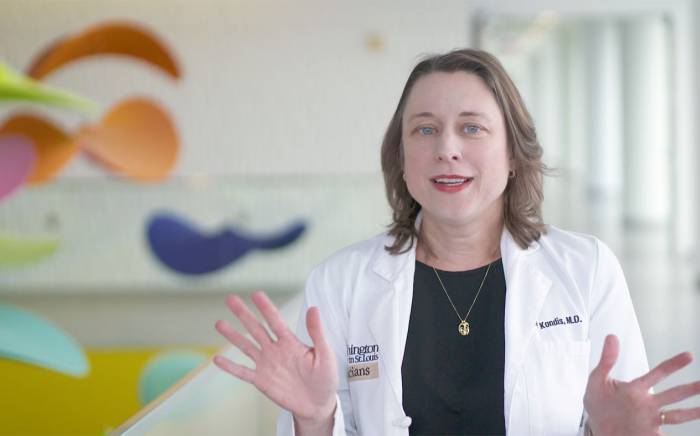Neurofibromatosis (NF) is a set of complex genetic conditions that can affect nearly every organ system in the body. NF causes tumors to grow on nerves throughout the body and in the brain. Other problems can include learning issues and bone deformities.
-
Neurofibromatosis I. This is the more common of the two disorders. It is also called Von Recklinghausen's disease. The classic symptom of NF I is light brown patches of pigment on the skin, called cafe-au-lait spots. Benign (non-cancerous) skin tumors associated with this condition are called neurofibromas. Neurofibromas are often found growing on the nerves and in various organs of the child's body. There is a high rate of brain tumors in patients associated with NF. Less than one percent of individuals with NF will have malignant (cancerous) changes in the neurofibromas. Lisch nodules, which are small tumors on the iris (colored part of the eye), may appear around adolescence, but usually do not cause problems. Hearing loss, headaches, seizures, scoliosis, and facial pain or numbness may also be present. Intellectual disability is present in up to one percent of individuals with neurofibromatosis I, while other children may have learning problems and hyperactivity.
-
Neurofibromatosis II. According to the NINDS, this type of neurofibromatosis affects approximately one in 25,000 people, and symptoms are usually noticed between 18 and 22 years of age. It is known as bilateral acoustic neurofibromatosis and is less common. This disease is characterized by tumors on the eighth cranial nerve, which can lead to hearing loss, headaches, problems with facial movements, problems with balance, and difficulty walking. Hearing loss may be noted as early as the teenage years. Other clinical signs of NF II may include seizures, neurofibromas (skin nodules), and cafe-au-lait spots (although these are not nearly as common as in NF I).
For more information or to schedule an appointment, call 314.454.5437 or 800.678.5437 or email us.












